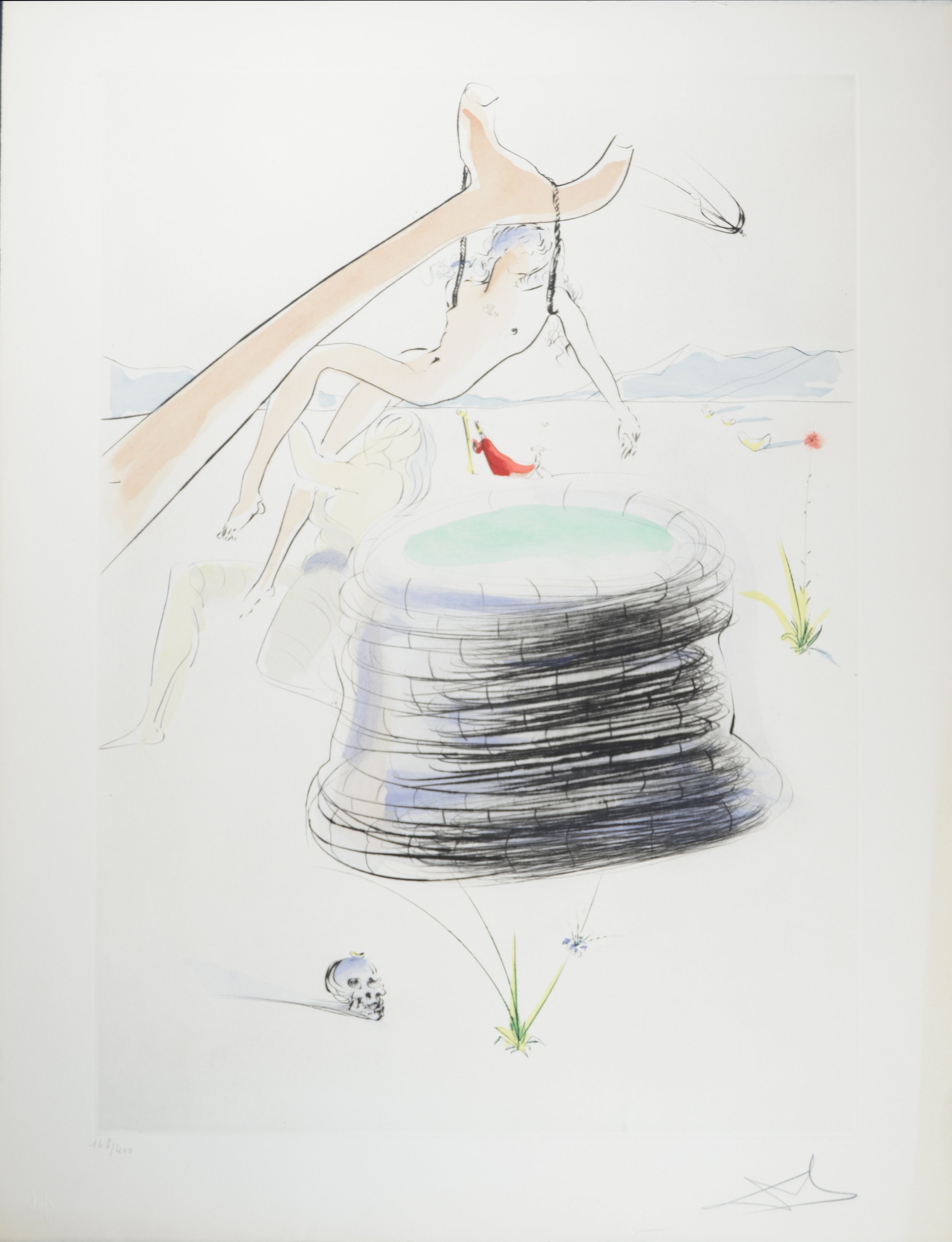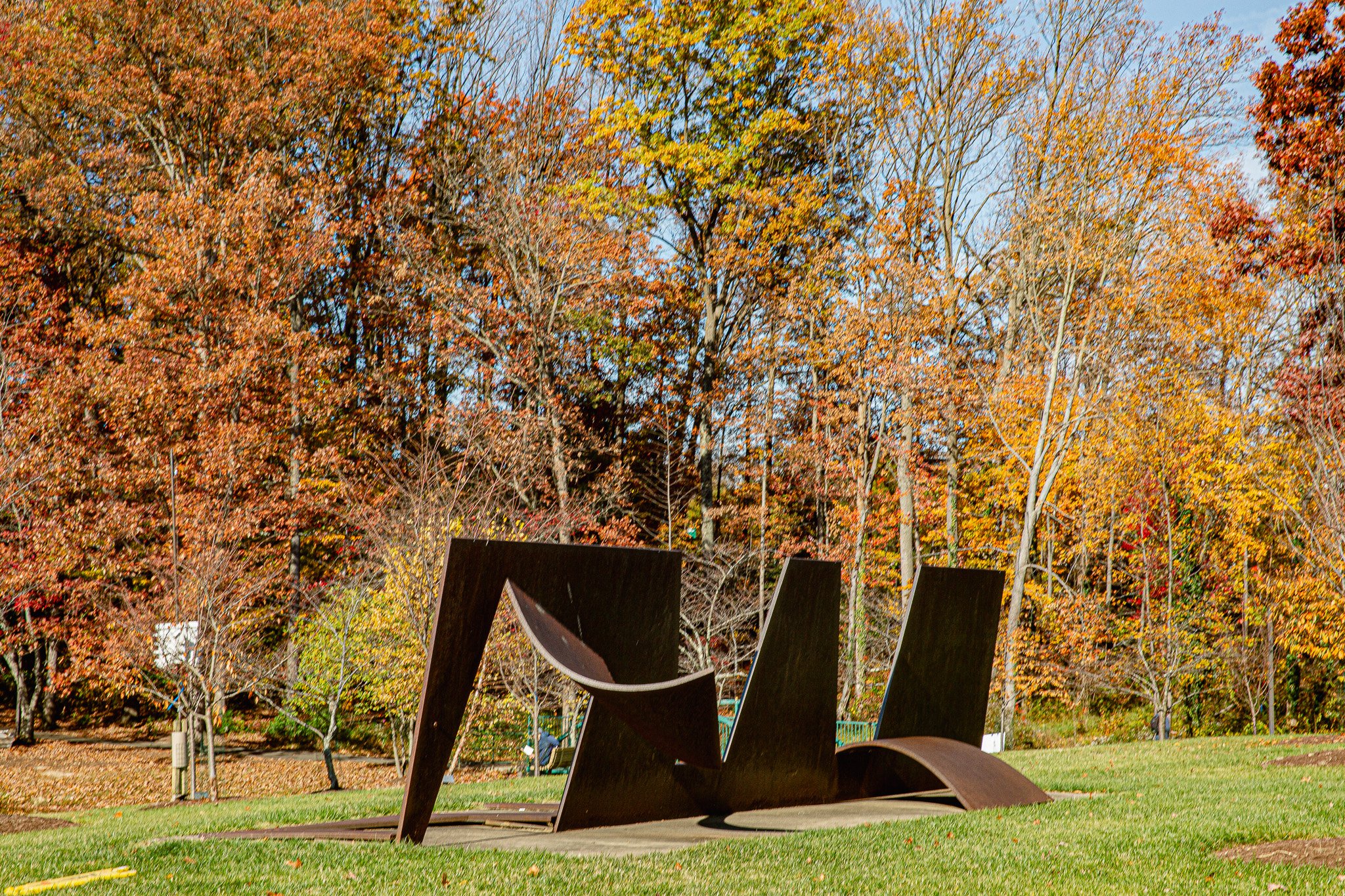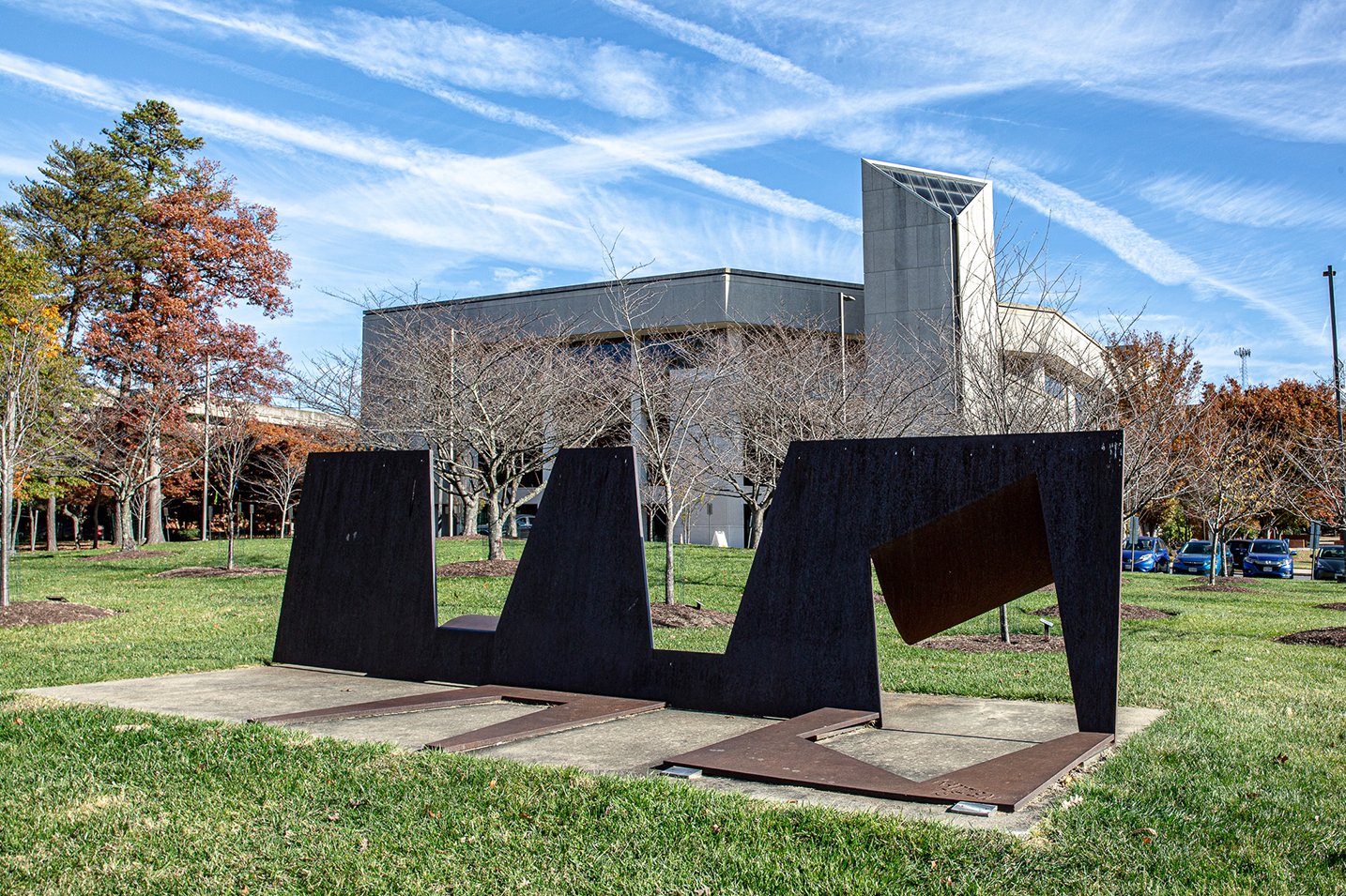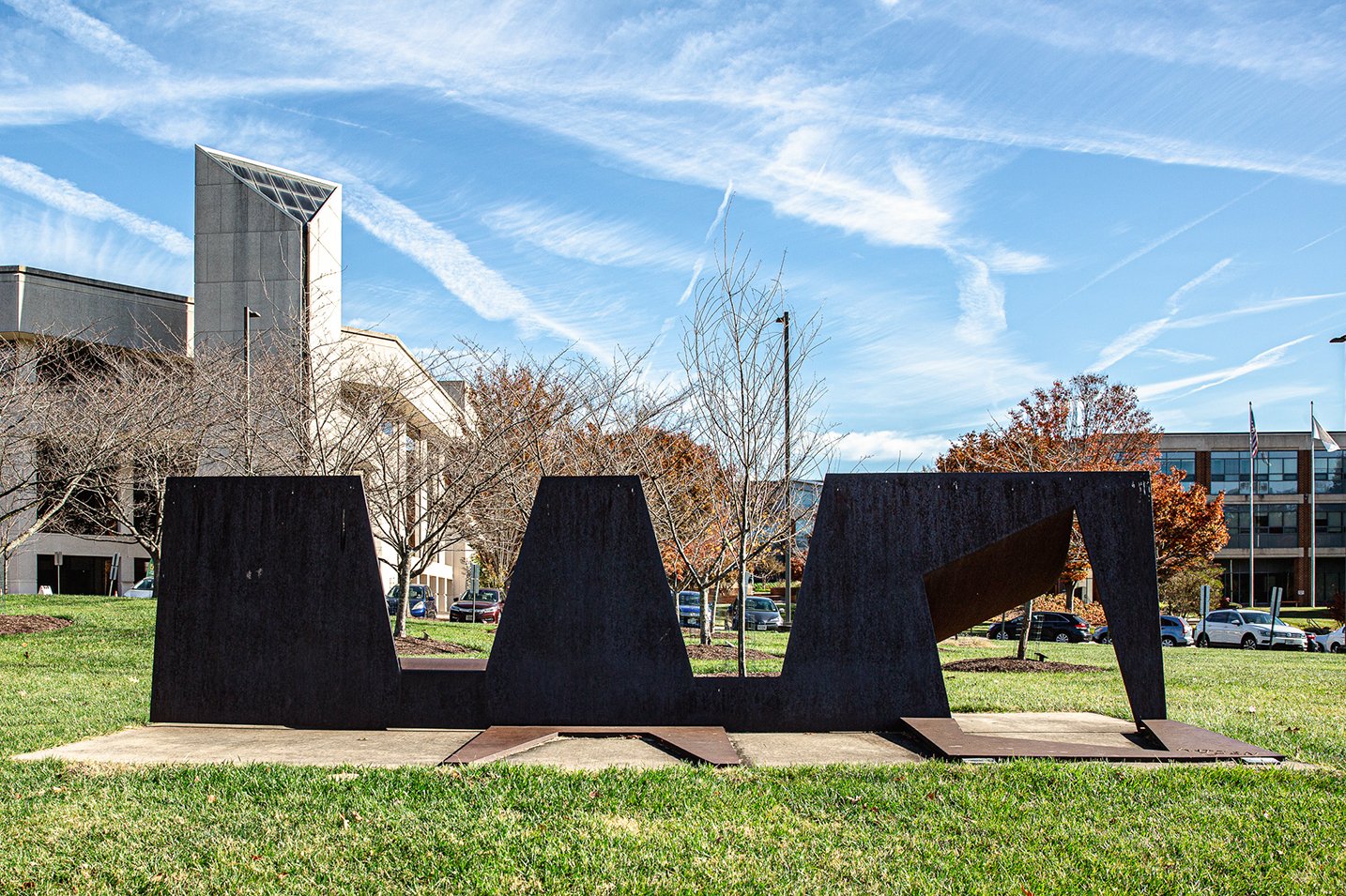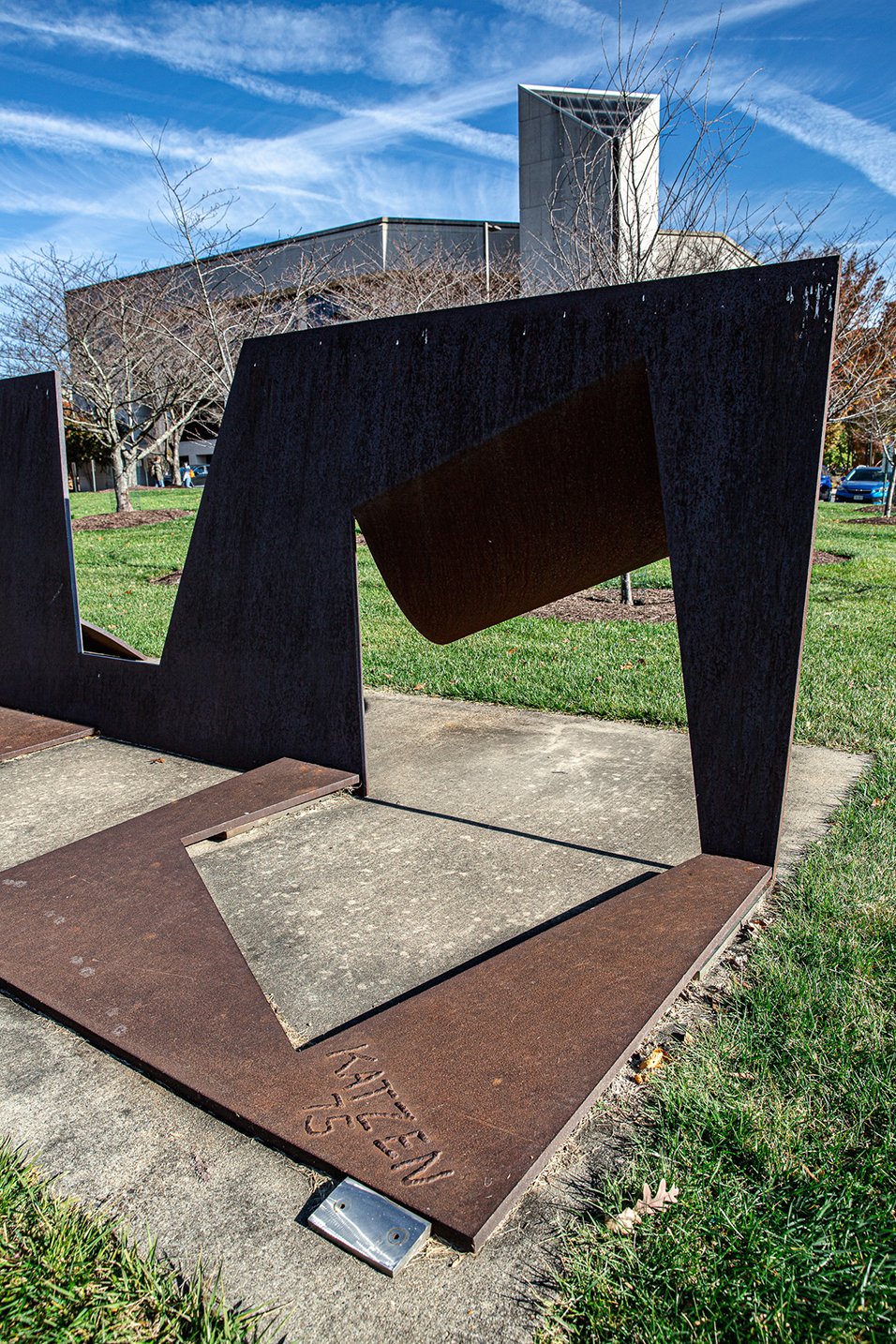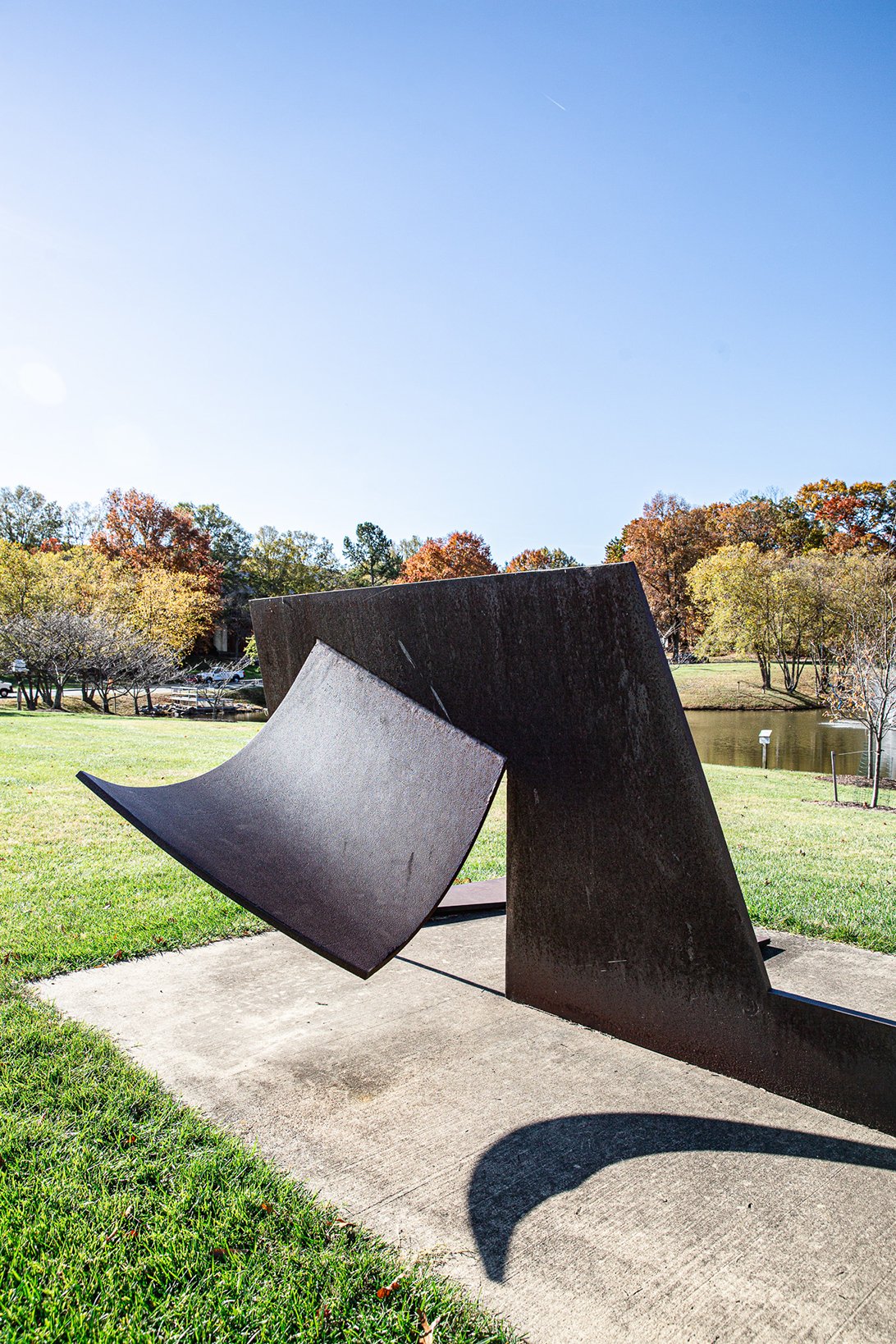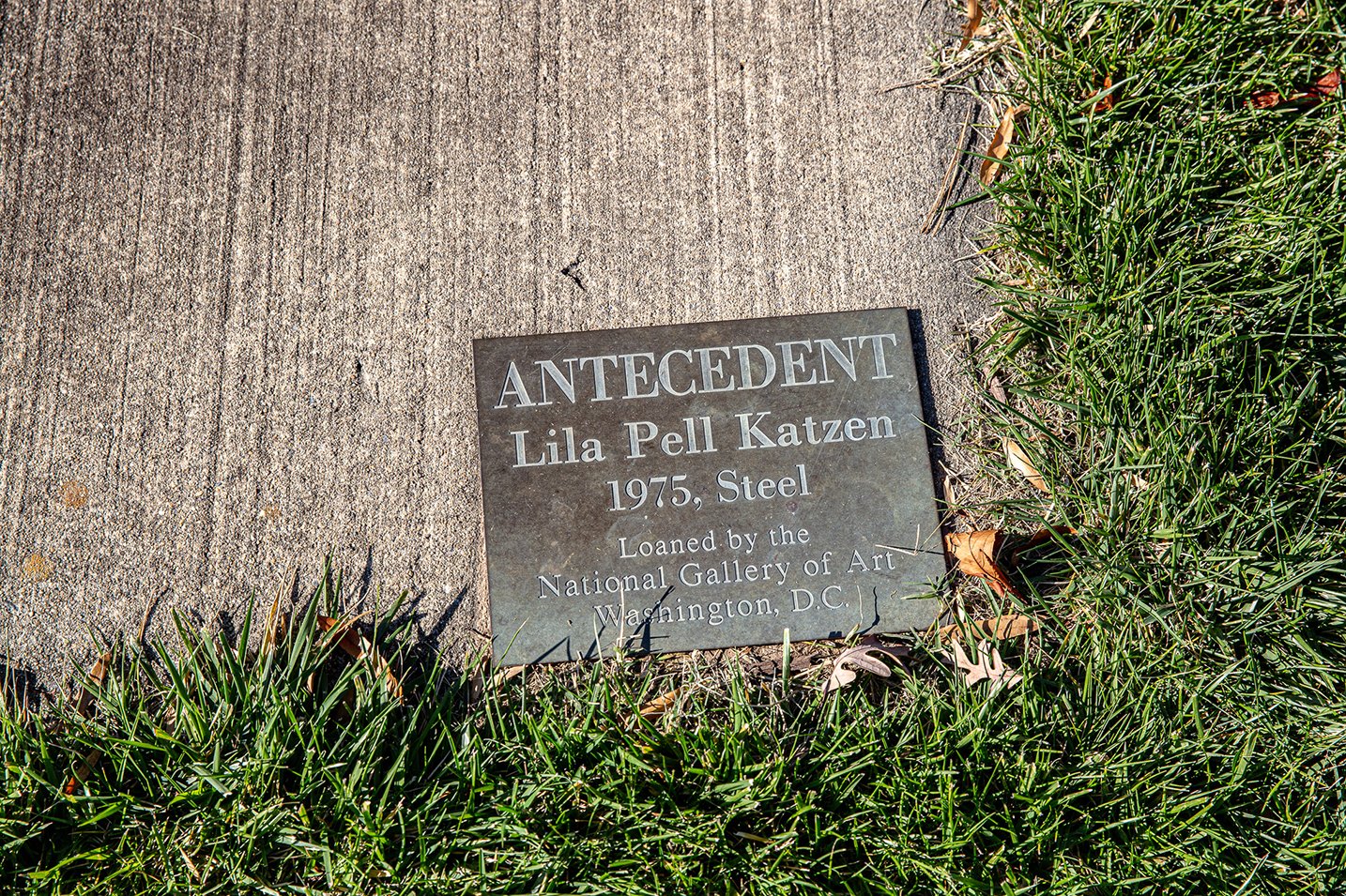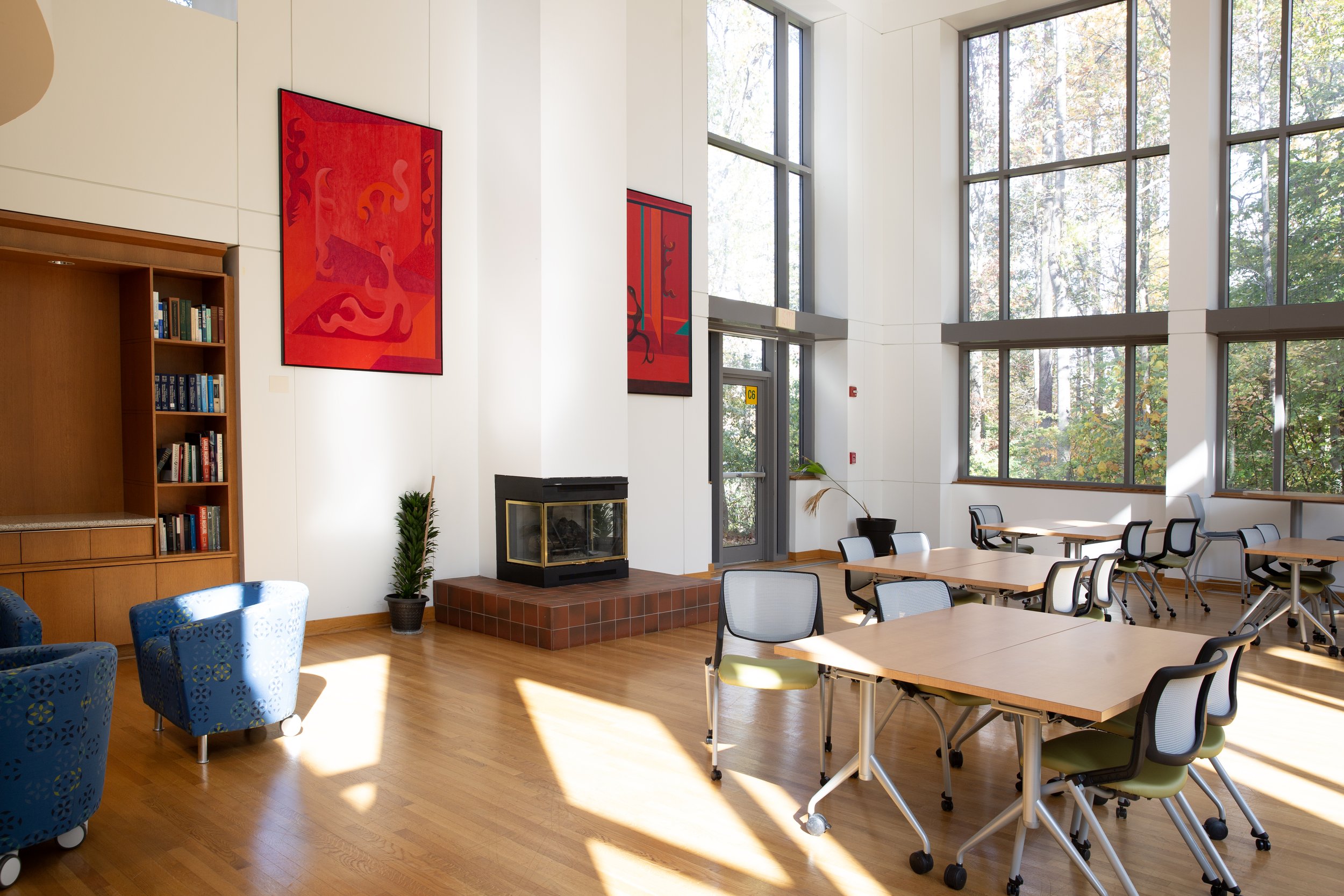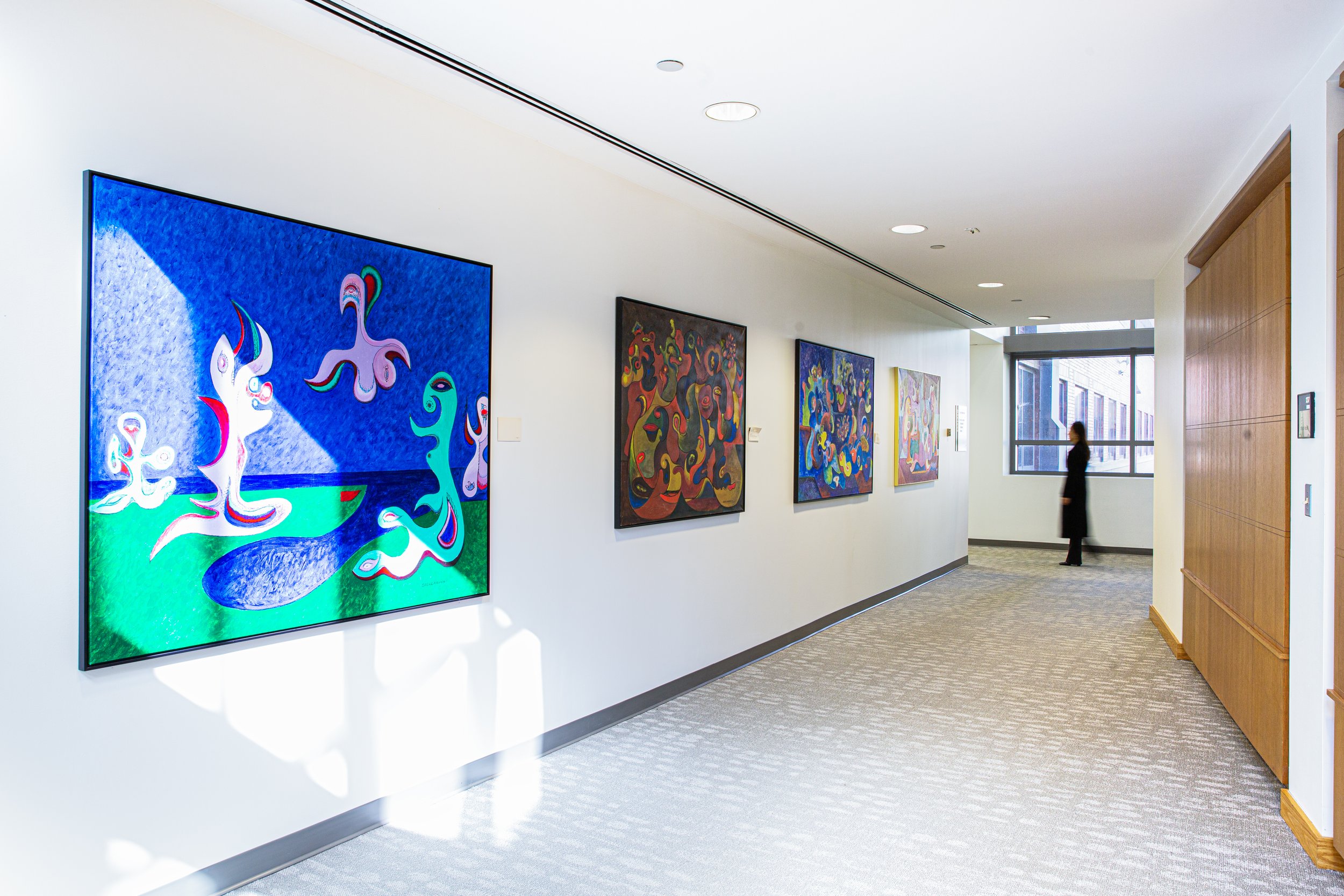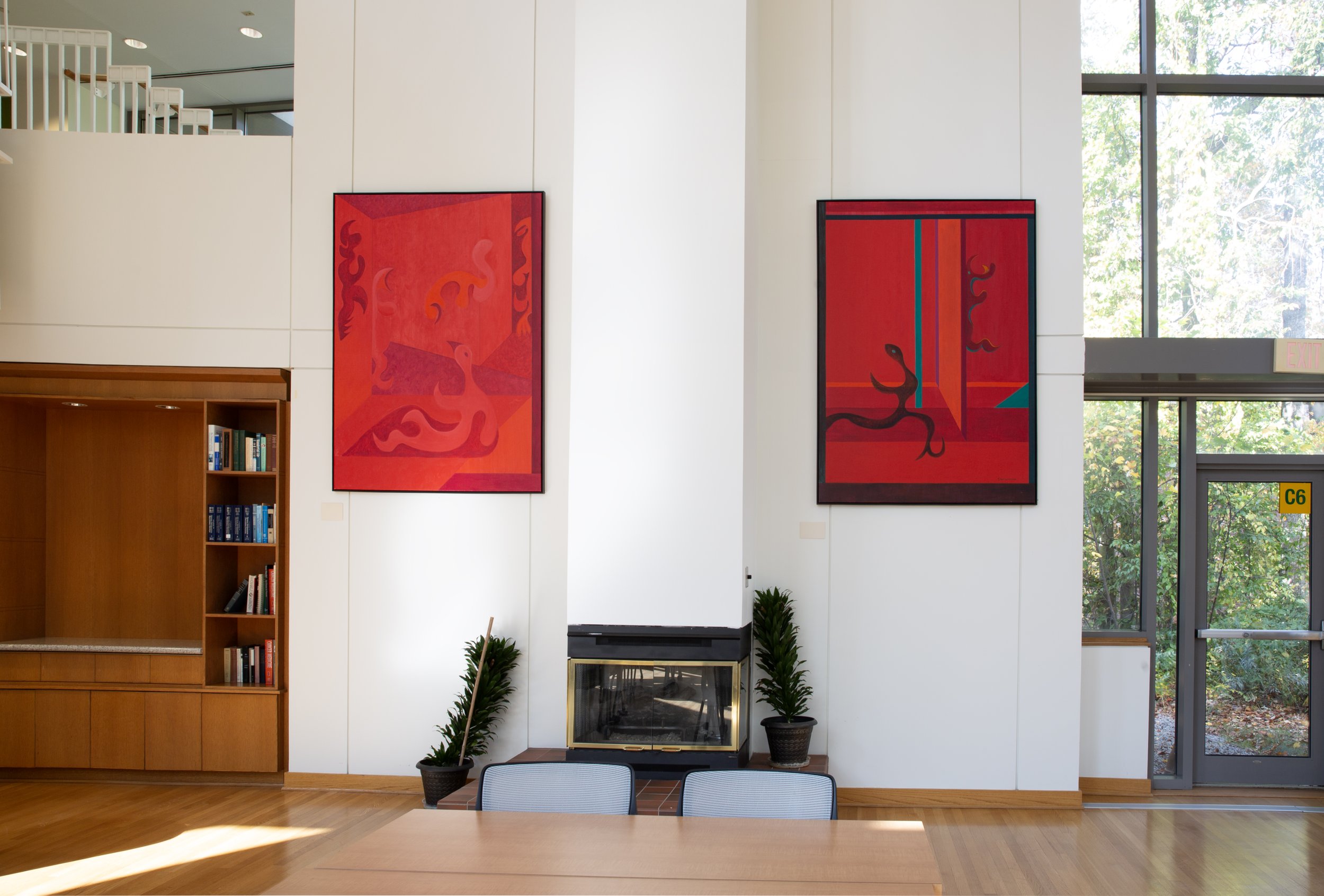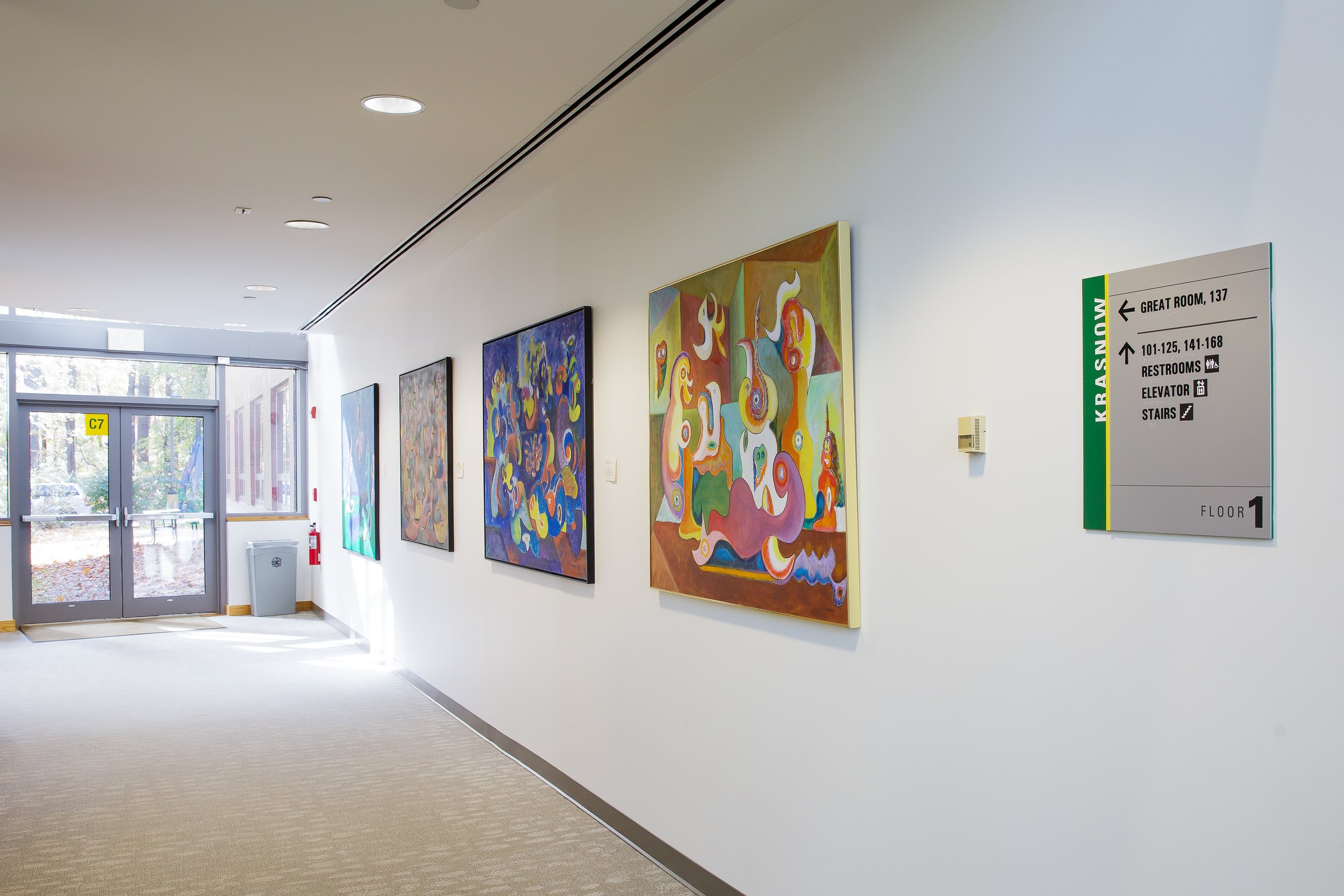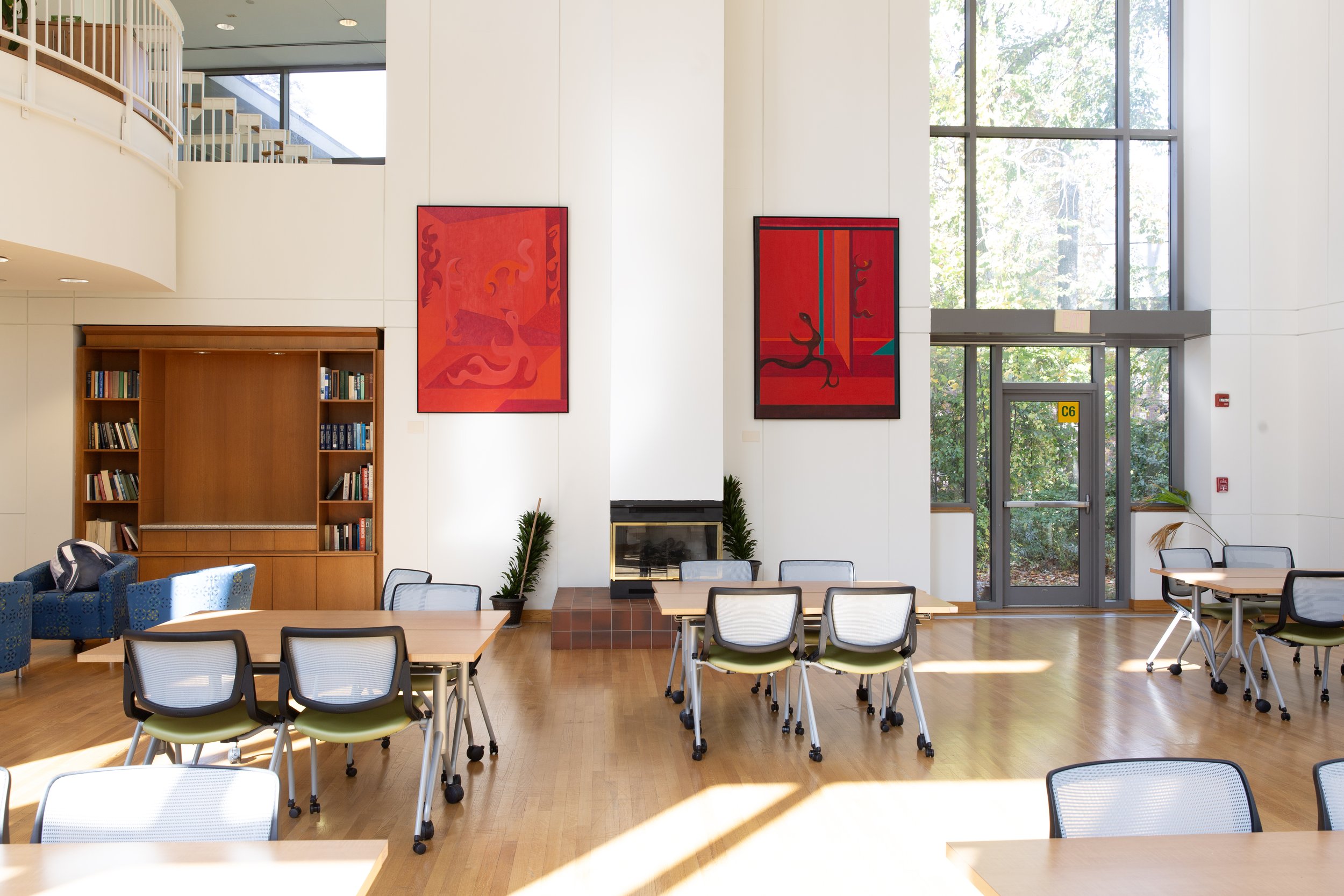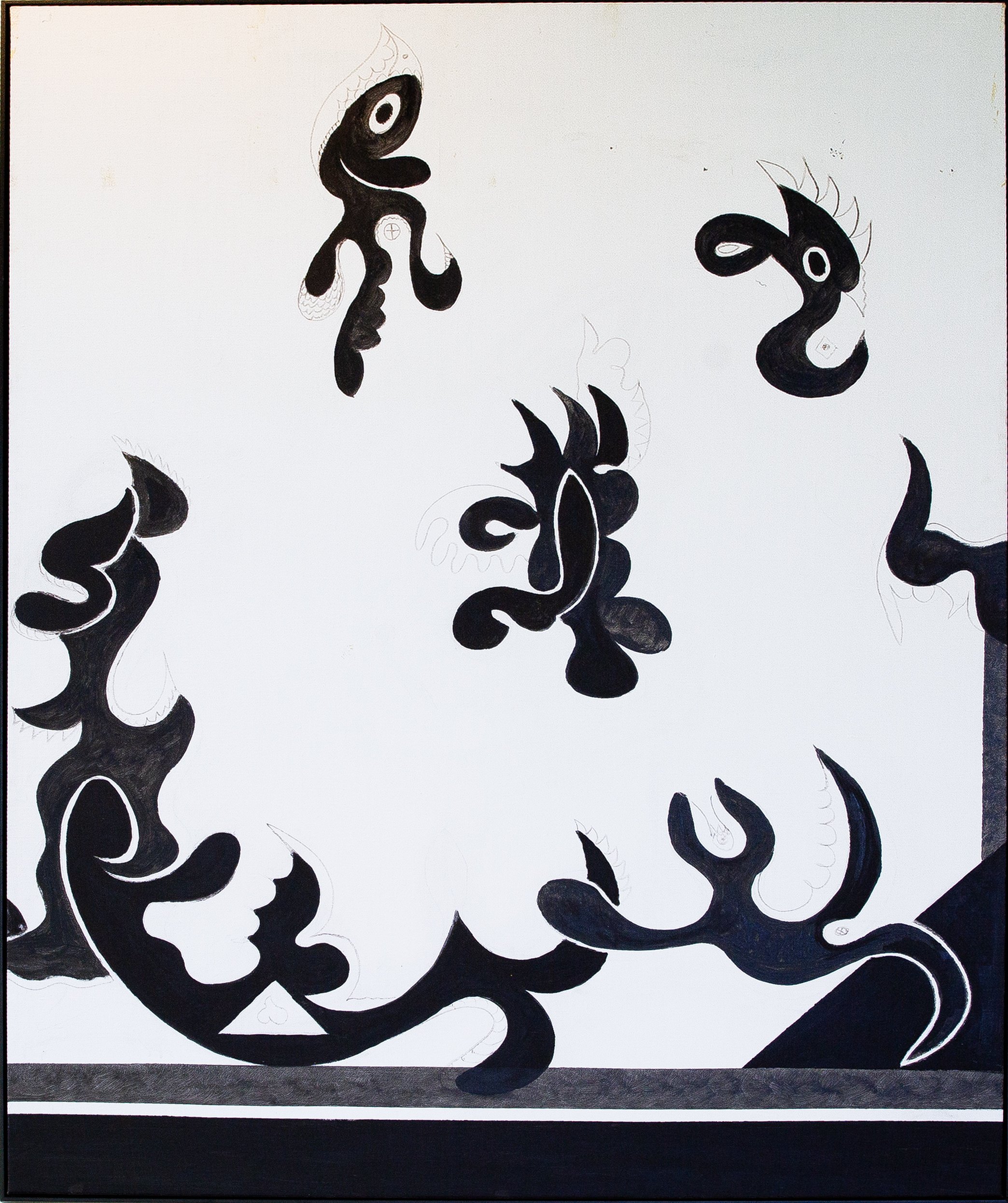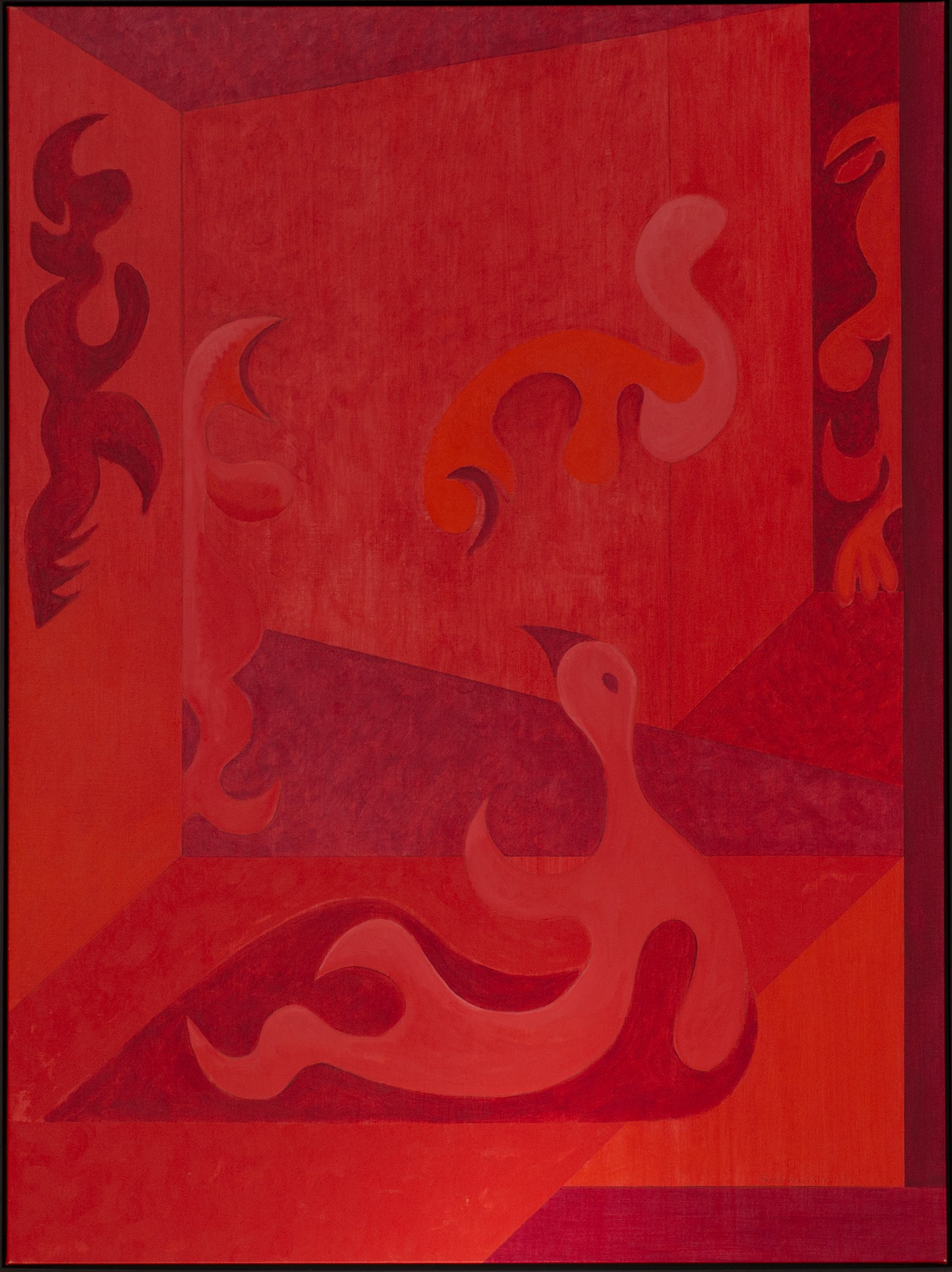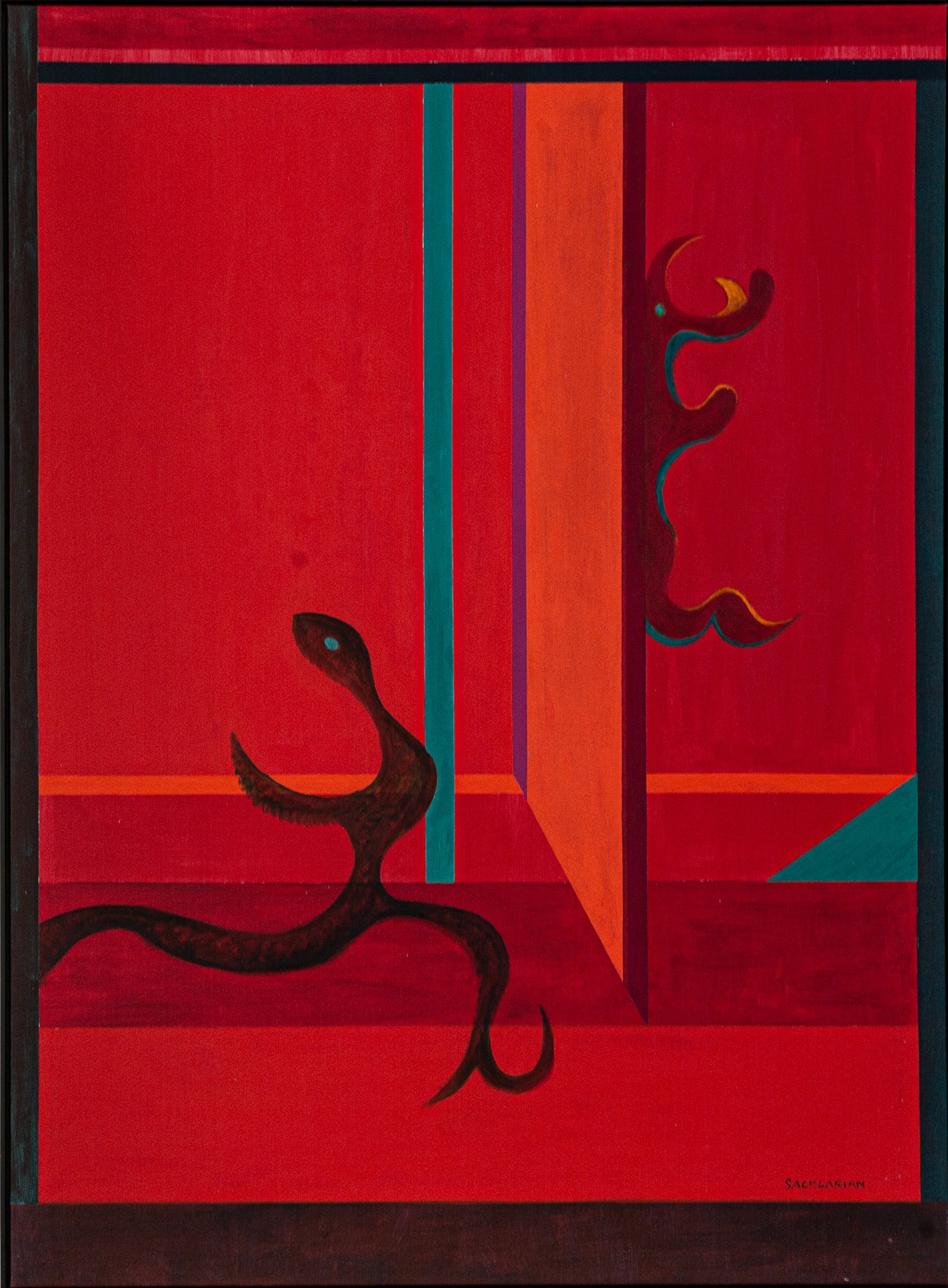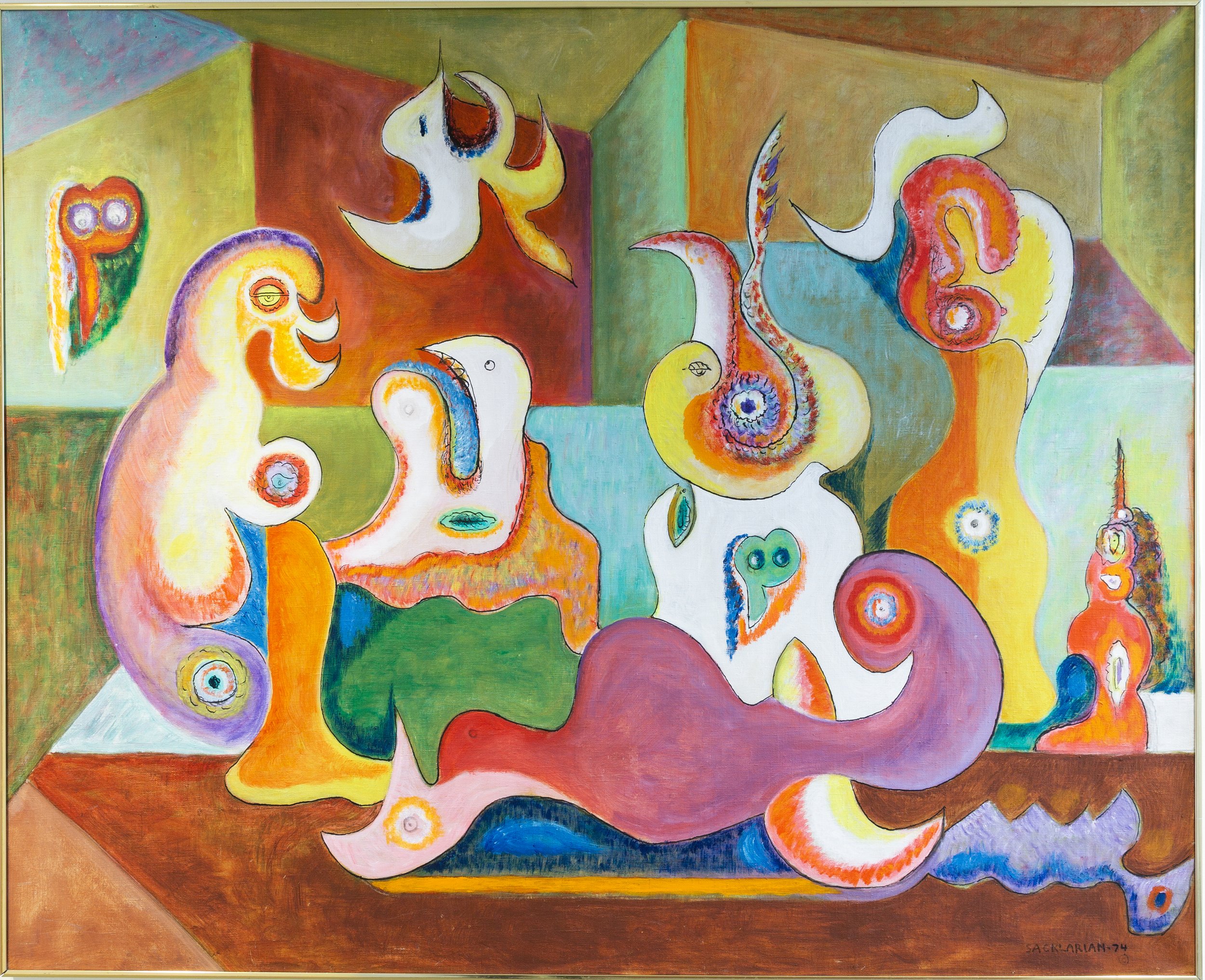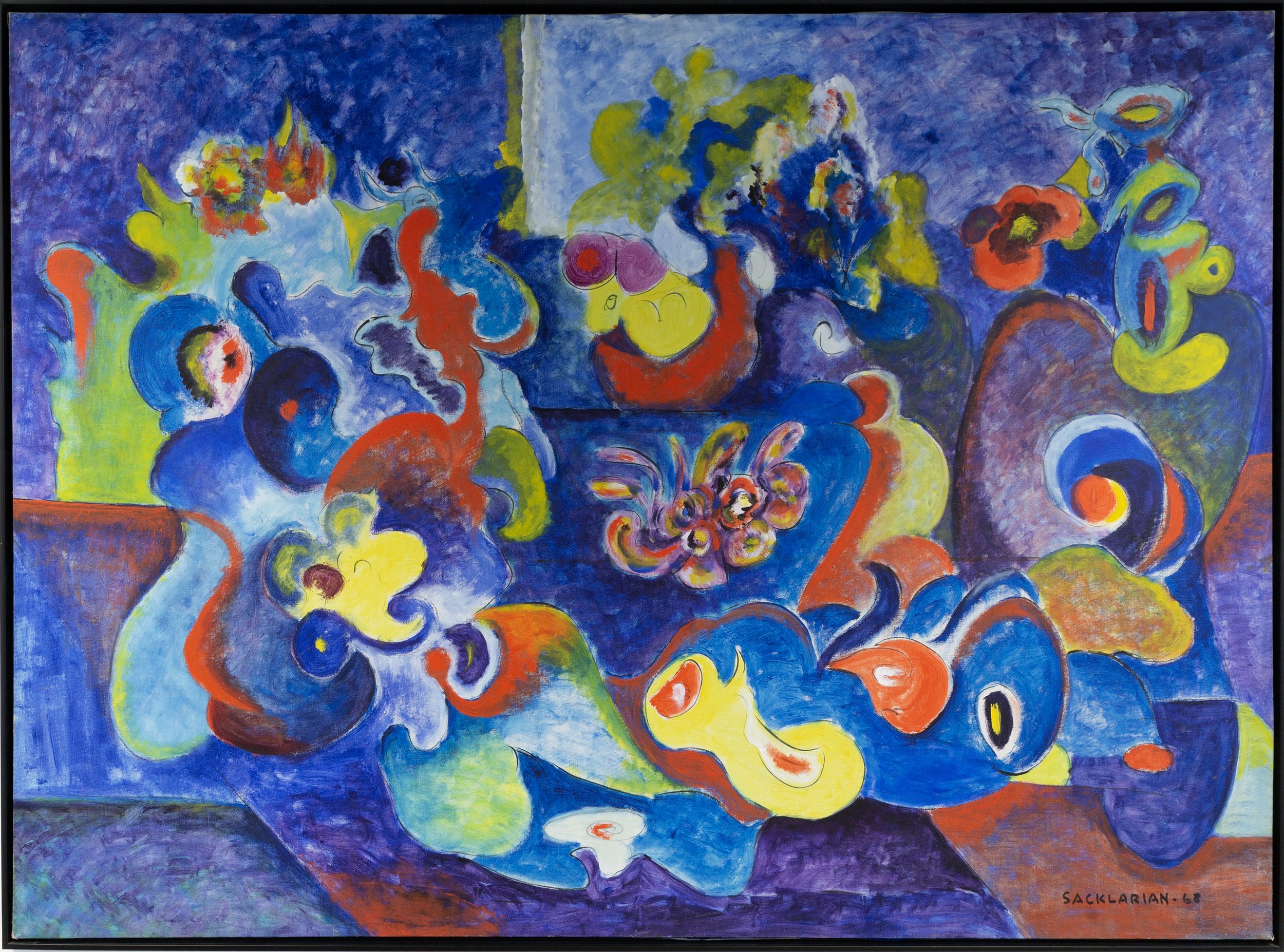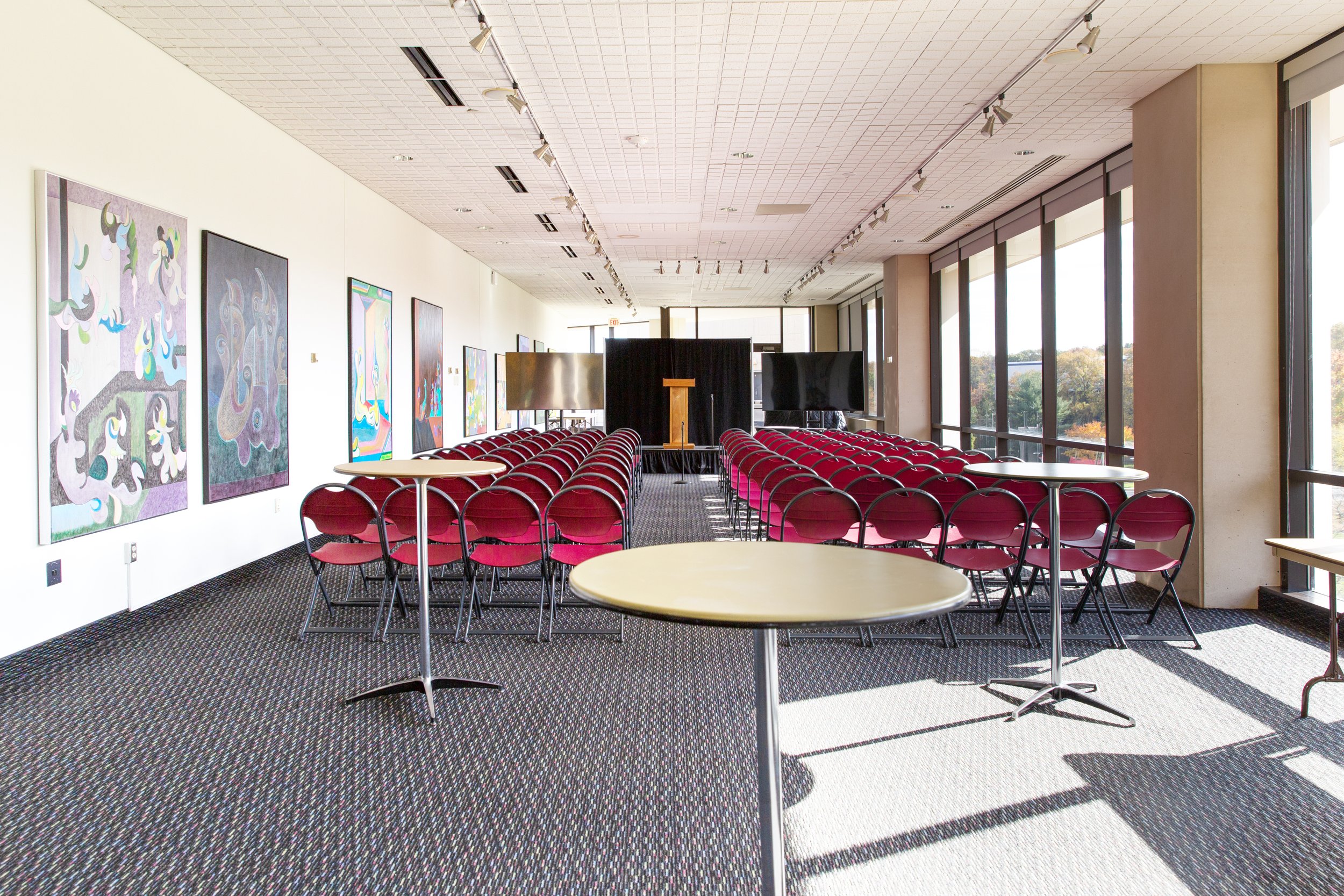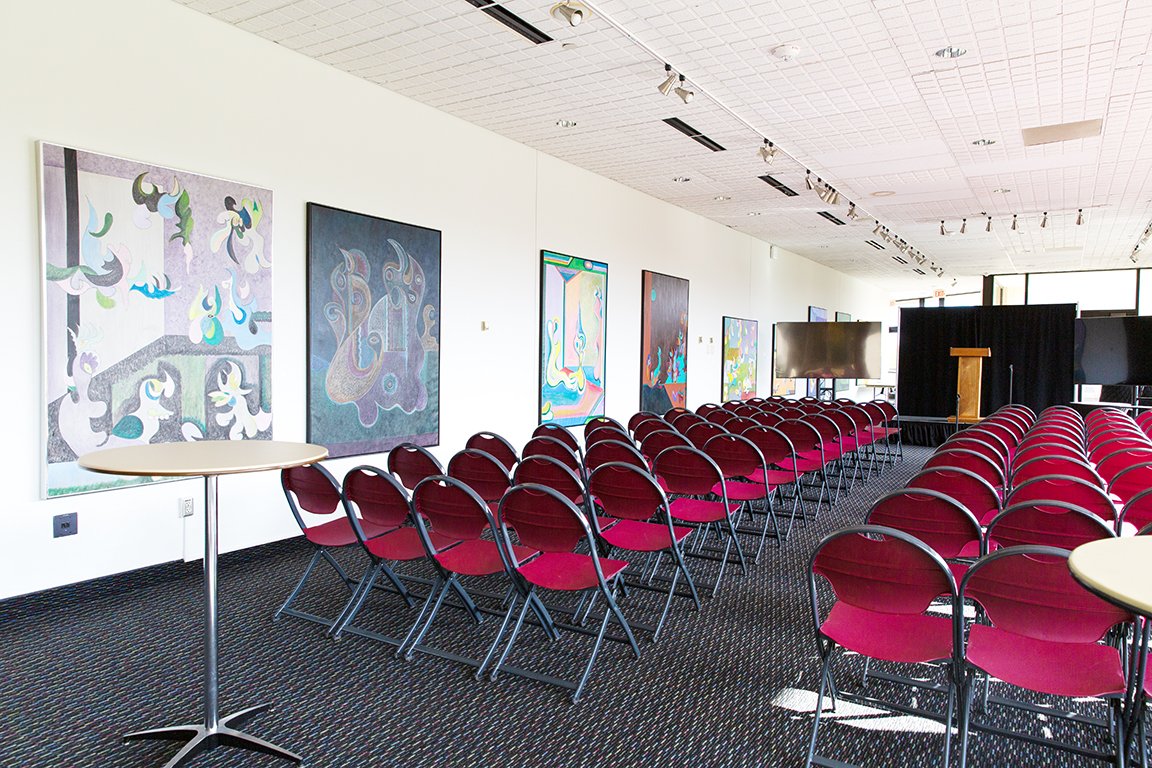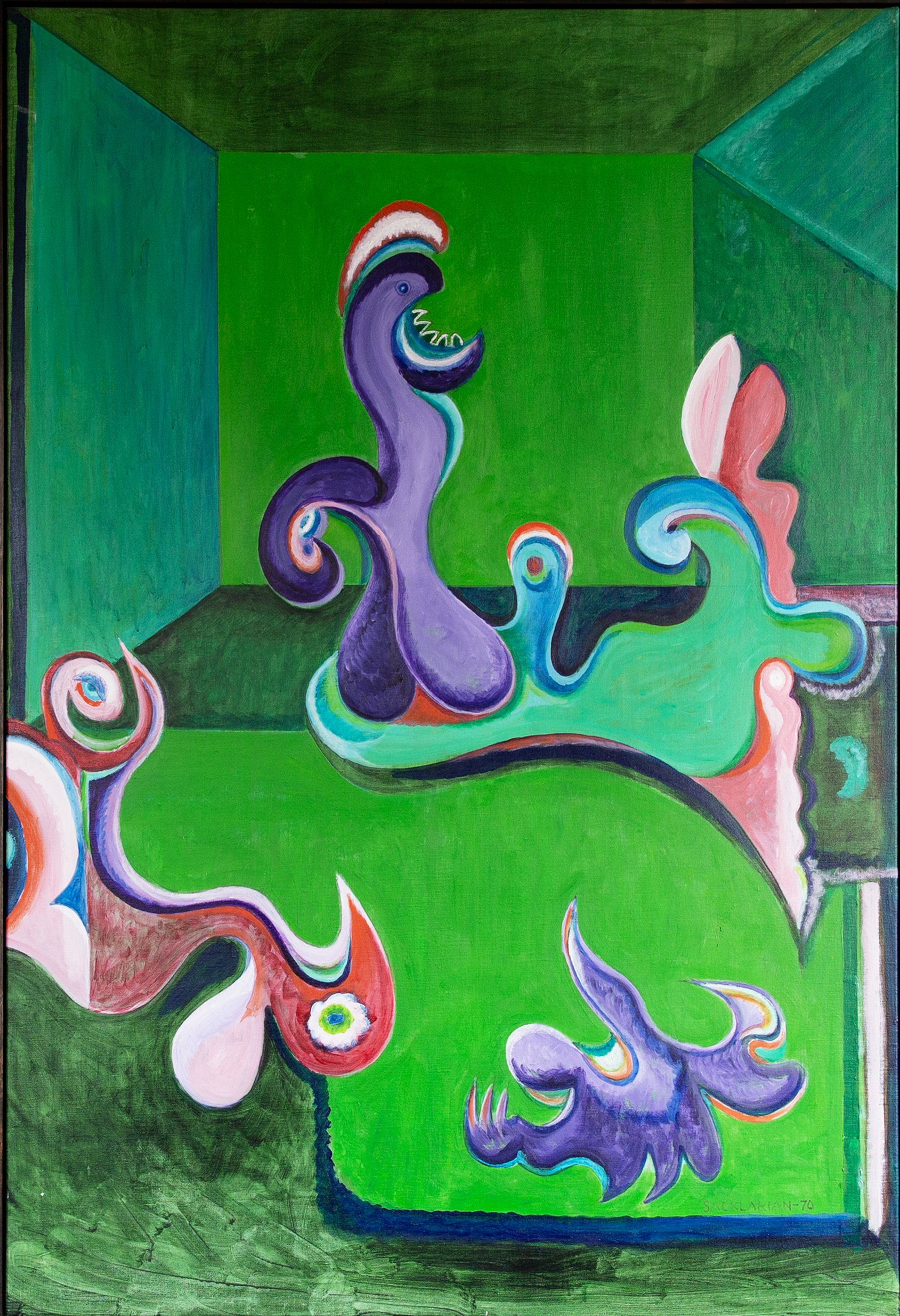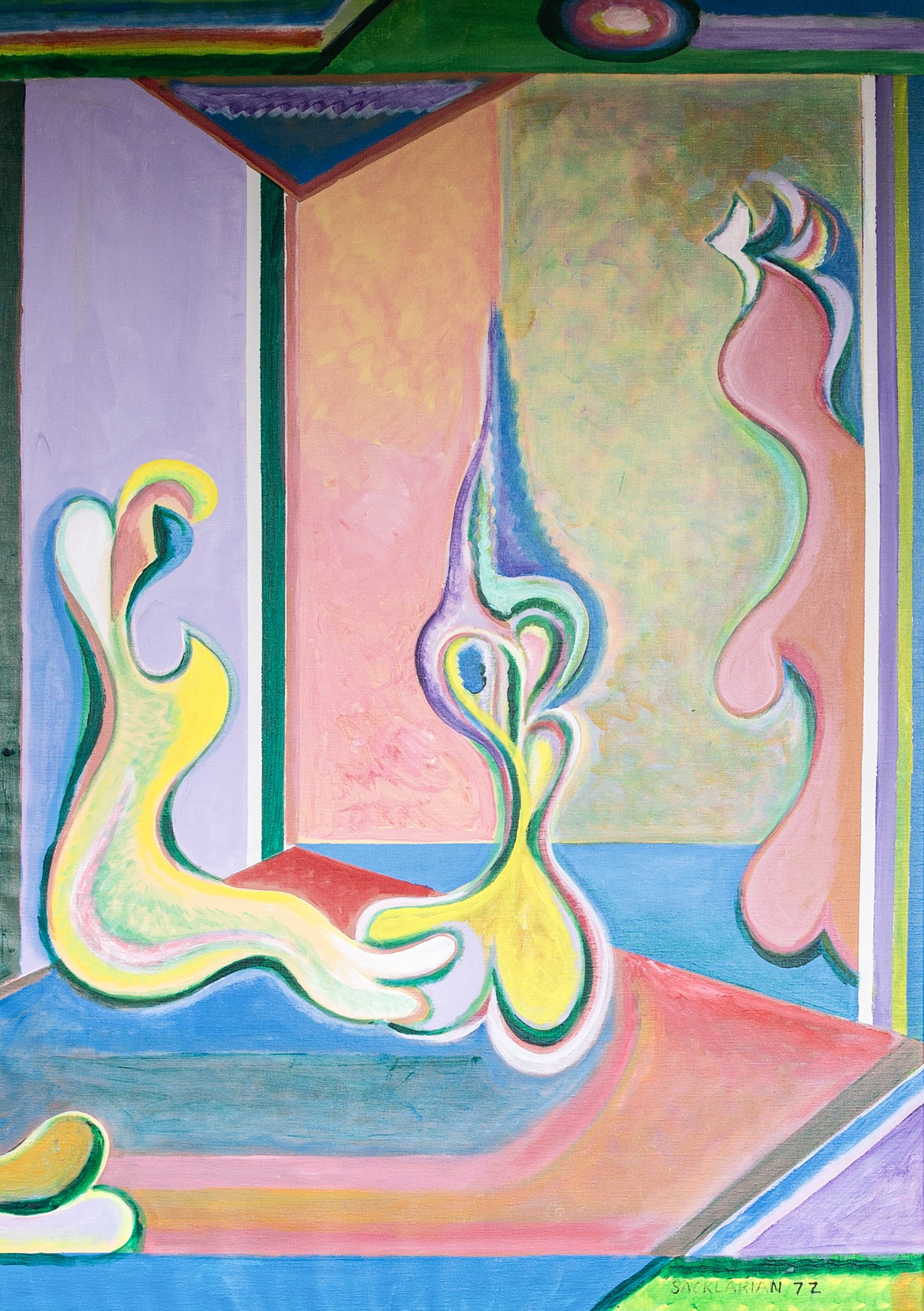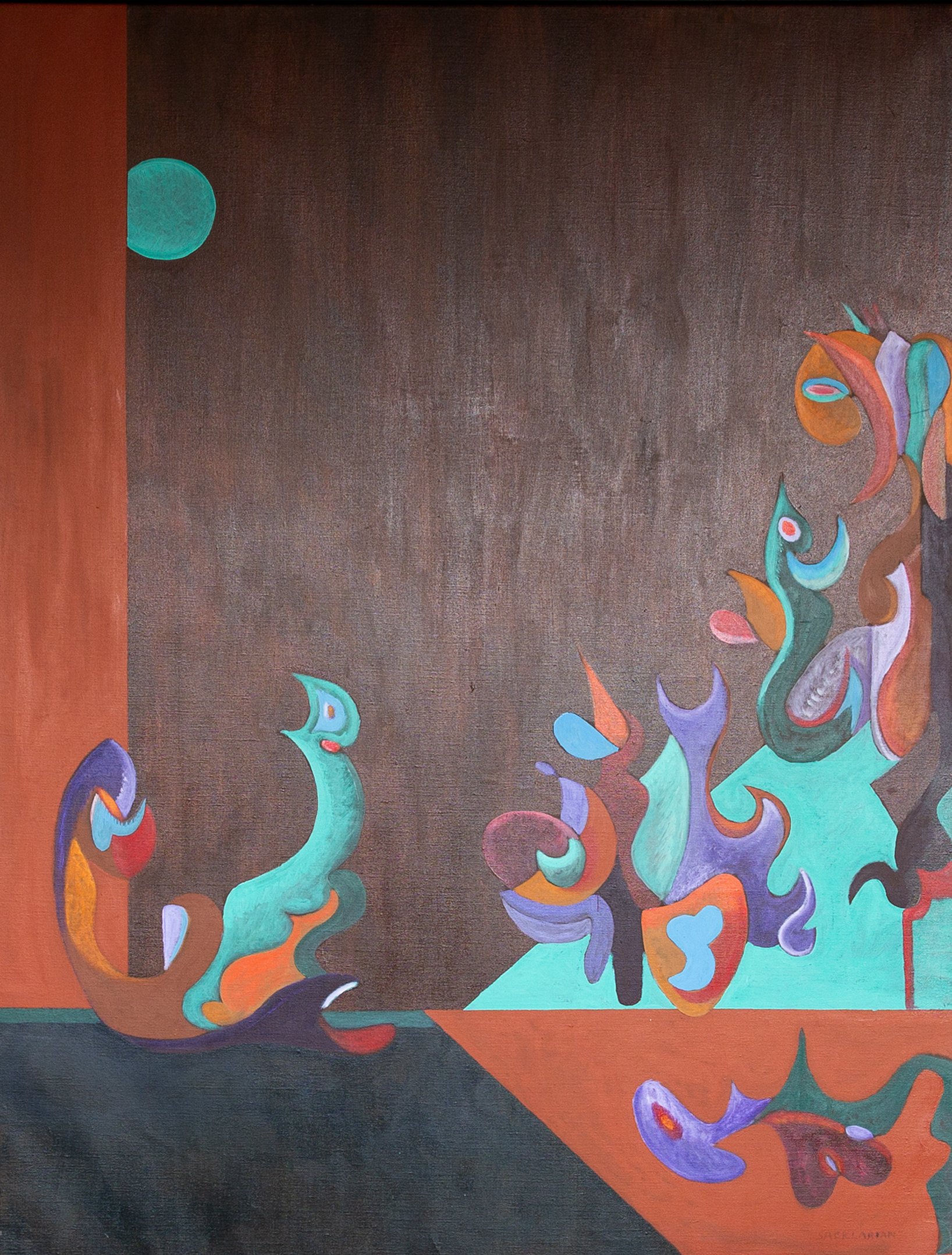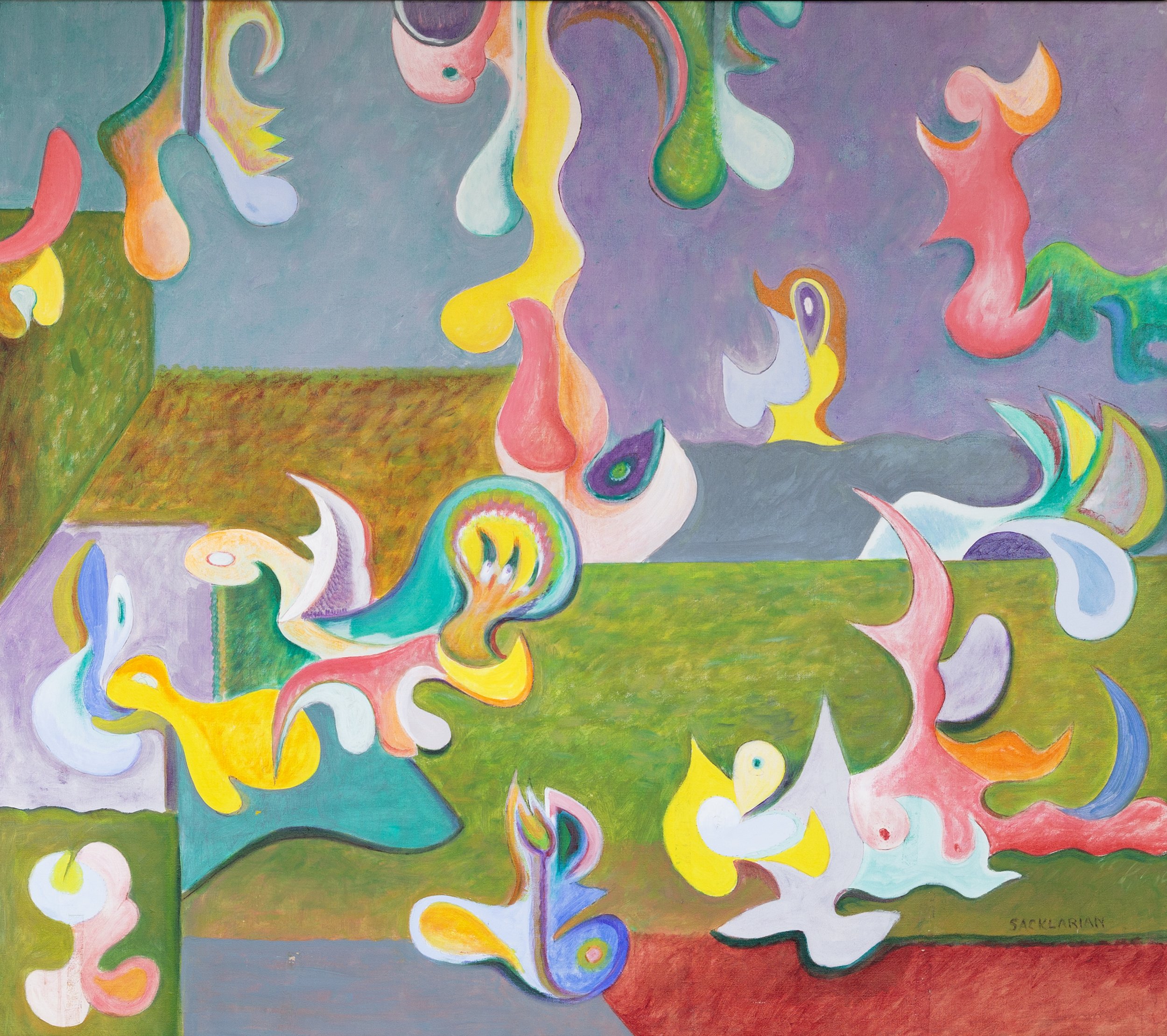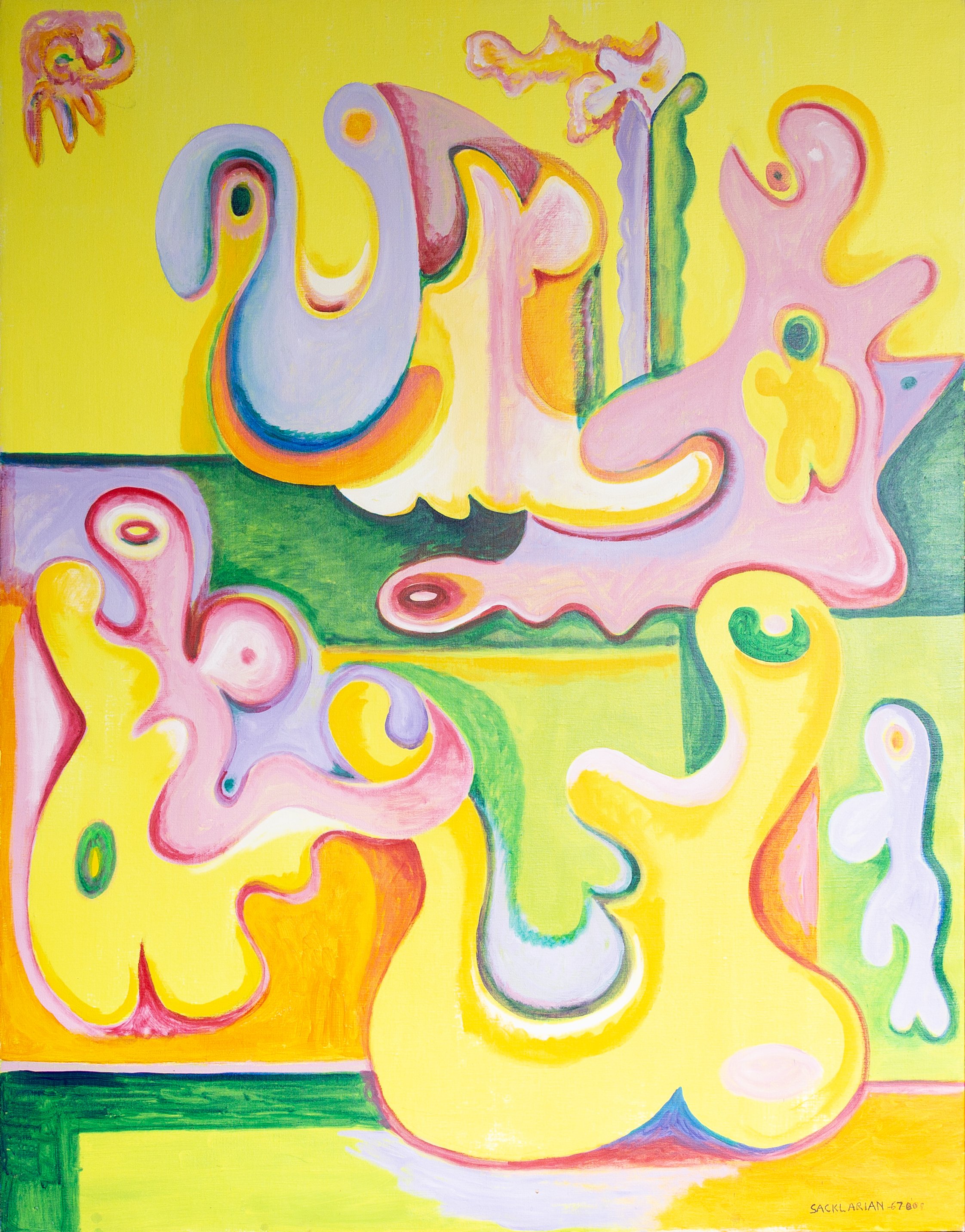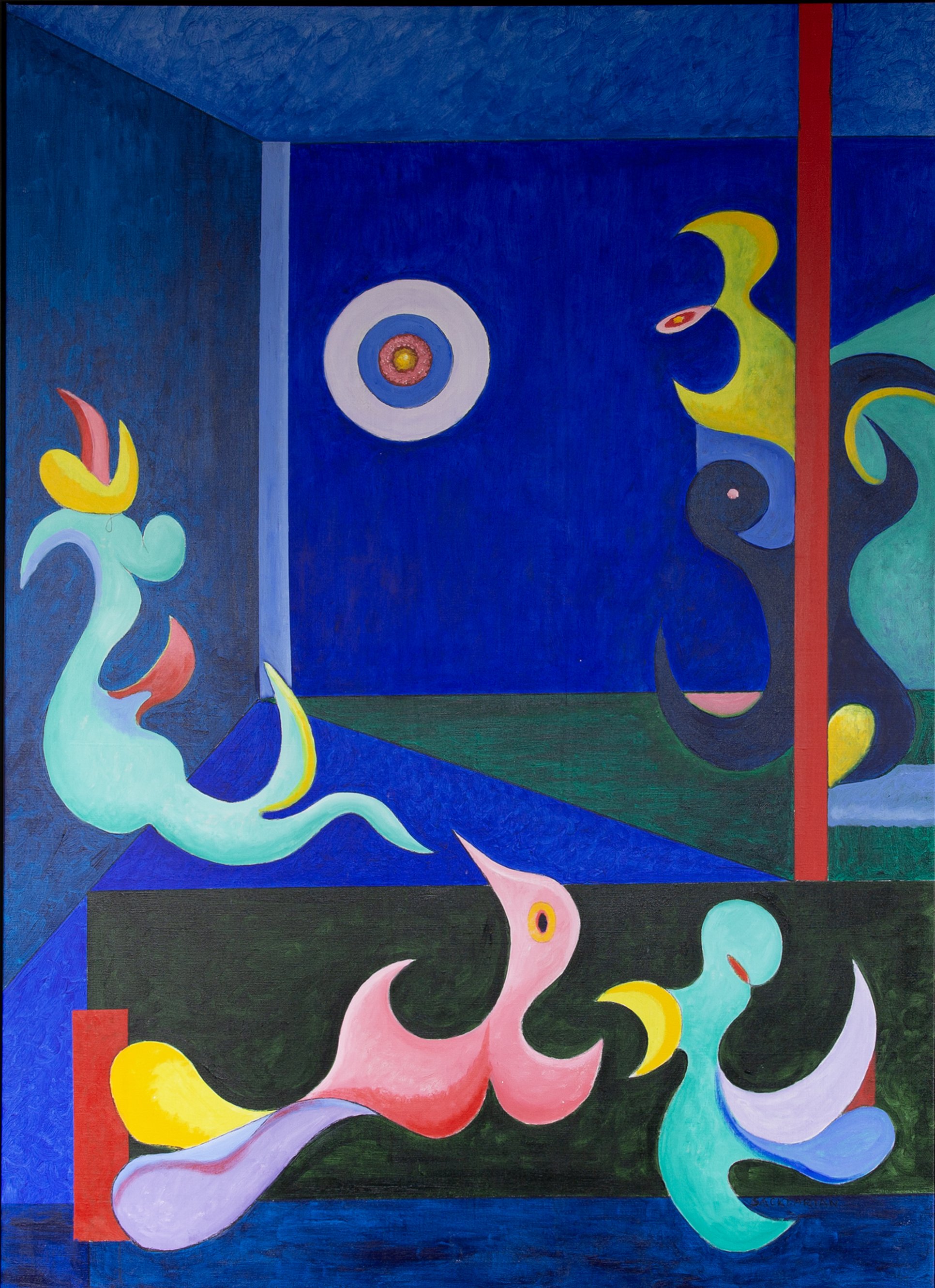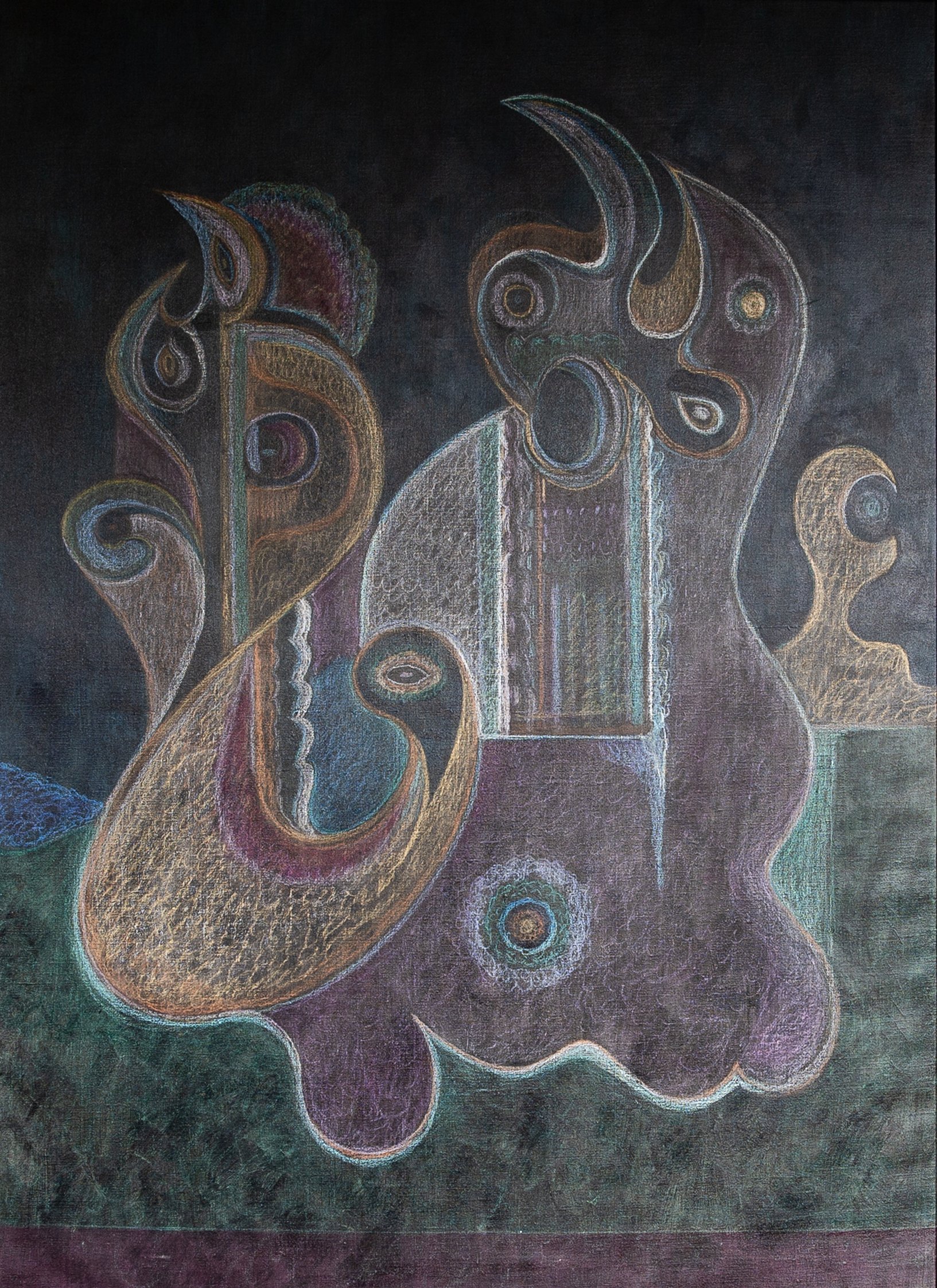Carlos & Samuel
/Carlos & Samuel, 2006
John Sonsini (b. 1950)
Oil on canvas
George Mason University Art Collection
Gift of Anonymous Donor
Currently on view at the Facilities Administration Conference Room.
John Sonsini is known for his deep exploration of male subjects, and his subjects include gay and non-gay individuals, working-class men, Latino immigrants, and day laborers from Los Angeles street corners. Sonsini's frequent subject, a Mexican American immigrant named Gabriel, played a significant role in shaping his artistic direction. Under Gabriel's influence, Sonsini shifted from painting exclusively nude or half-dressed poses with homoerotic undertones to painting fully clothed men, creating a more inclusive and personal connection with his subjects.
Based in downtown Los Angeles, Sonsini often painted portraits of day laborers from Latin America, depicting them in the modest clothes they wear while waiting for work. His art often combines abstraction with the human figure, and he emphasizes personal encounters with live models in his work. Sonsini's paintings are known for their collaborative nature, with many of the colors and poses inspired by the sitters themselves. Sonsini believes that finding one specific subject can be as essential as searching for a broader theme. With a successful career and growing recognition, Sonsini continues to create art, frequently painting his subjects in group portraits.
Photos by Audrey Kwakye, Communications and Marketing, Facilities and Campus Operations







































